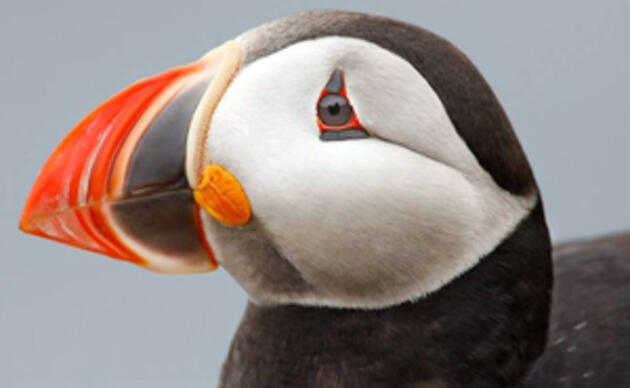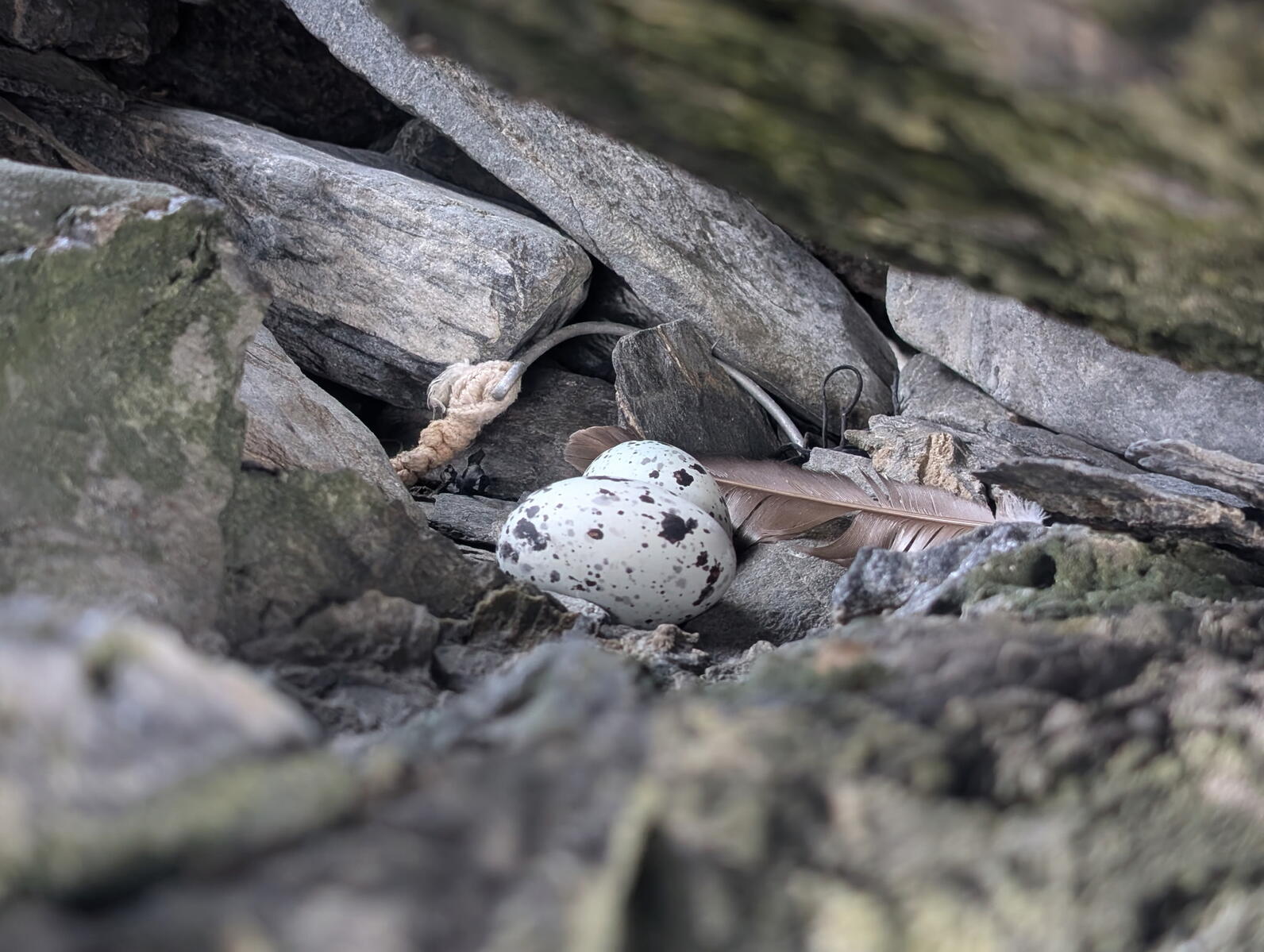
Back to Business
With island research teams settled into camp, the real work begins. Tern study plots have been established on each island, and as nests begin to fill with eggs, researchers are increasingly excited for the soon-to-hatch chicks. Puffins are returning to Eastern Egg Rock with fish, the telltale sign that pufflings have hatched in the island’s rocky burrows. Seal Island research staff found a “grubbable” Razorbill chick and took the opportunity to weigh and measure the bird.
“Grubbing” happens when researchers contort themselves into burrows in search of seabirds and chicks. The birds are temporarily removed to be weighed, measured, and receive leg bands before being carefully returned to their burrows.
Tagging seabirds, like Atlantic Puffins, Roseate Terns, and Leach’s Storm Petrels, has resumed! Oregon State University PhD student Keenan Yakola is leading the field effort. His goal is to identify the important habitats on which these birds, especially the endangered Roseate Tern, rely. Scientists from the University of Washington and Audubon’s Senior Manager for Boreal Conservation Science, Dr. Carrie Gray, joined Keenan in the field this week to learn how these tagging methods may be incorporated into their own work.
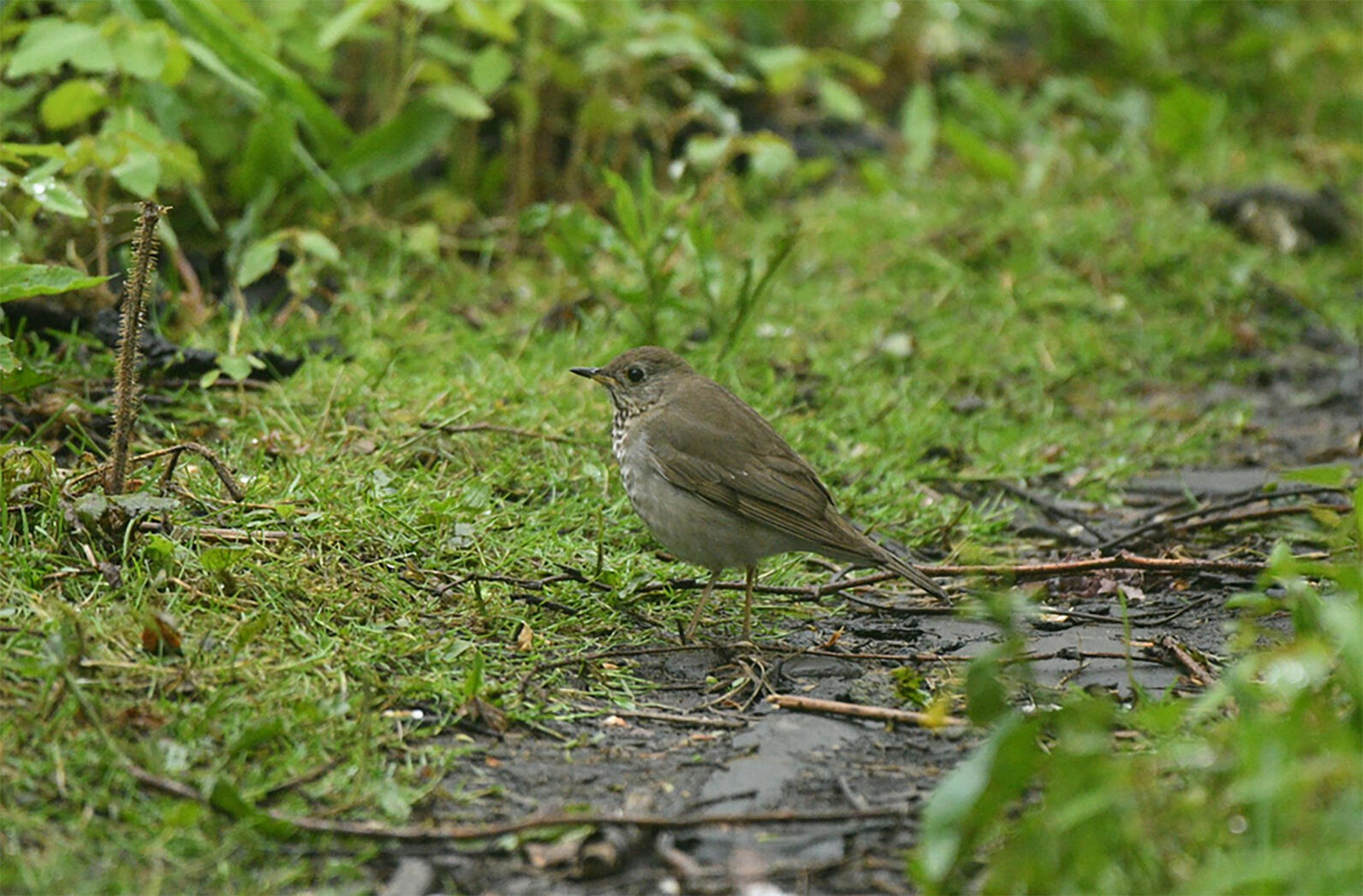
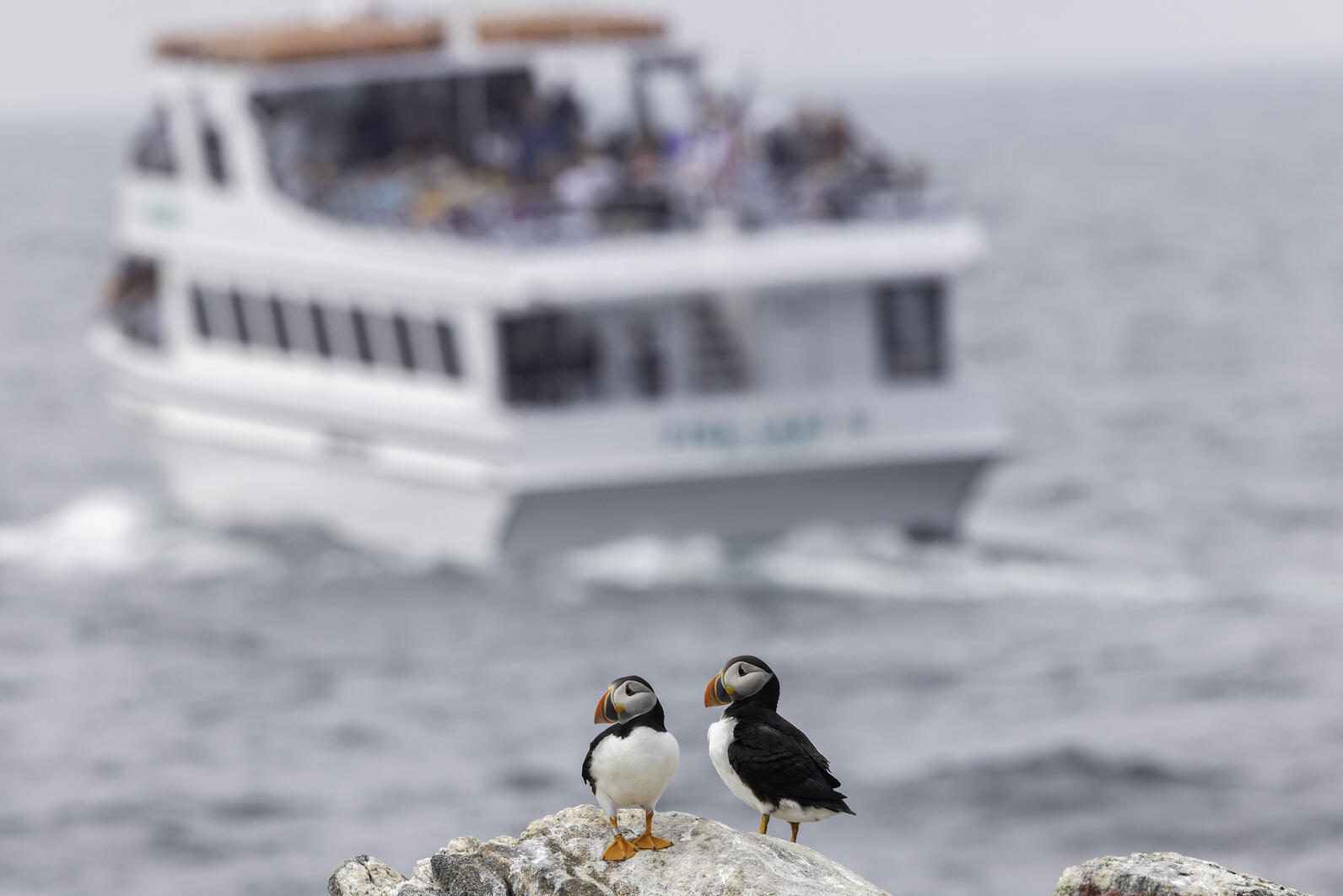
The Star of the State
Just like lobsters, Atlantic Puffins are emblematic of Maine’s coast. It’s nearly impossible to walk into a Maine gift shop without seeing puffins pictured on drinkware, t-shirts, hats, and more. They’re featured on beverage cans, have stores named after them, and a minor-league sports team even has a puffin mascot. There is no denying puffins’ popularity, an impressive feat for an animal that can’t be seen in the United States without a seafaring vessel.
For over 30 years, the Seabird Institute has partnered with local boat tour companies, allowing Maine’s residents and visitors to catch a glimpse of these avian icons. Audubon naturalists are aboard Puffin Cruises with Cap’n Fish’s Cruises and Hardy Boat, to provide a crash course in seabird identification, a history of seabird restoration efforts in Maine, and guidance to passengers as the boats circle Eastern Egg Rock. While Atlantic Puffins are the star of the show, Northern Gannets and Maine’s sole Tufted Puffin have at time stolen the spotlight early in the season.
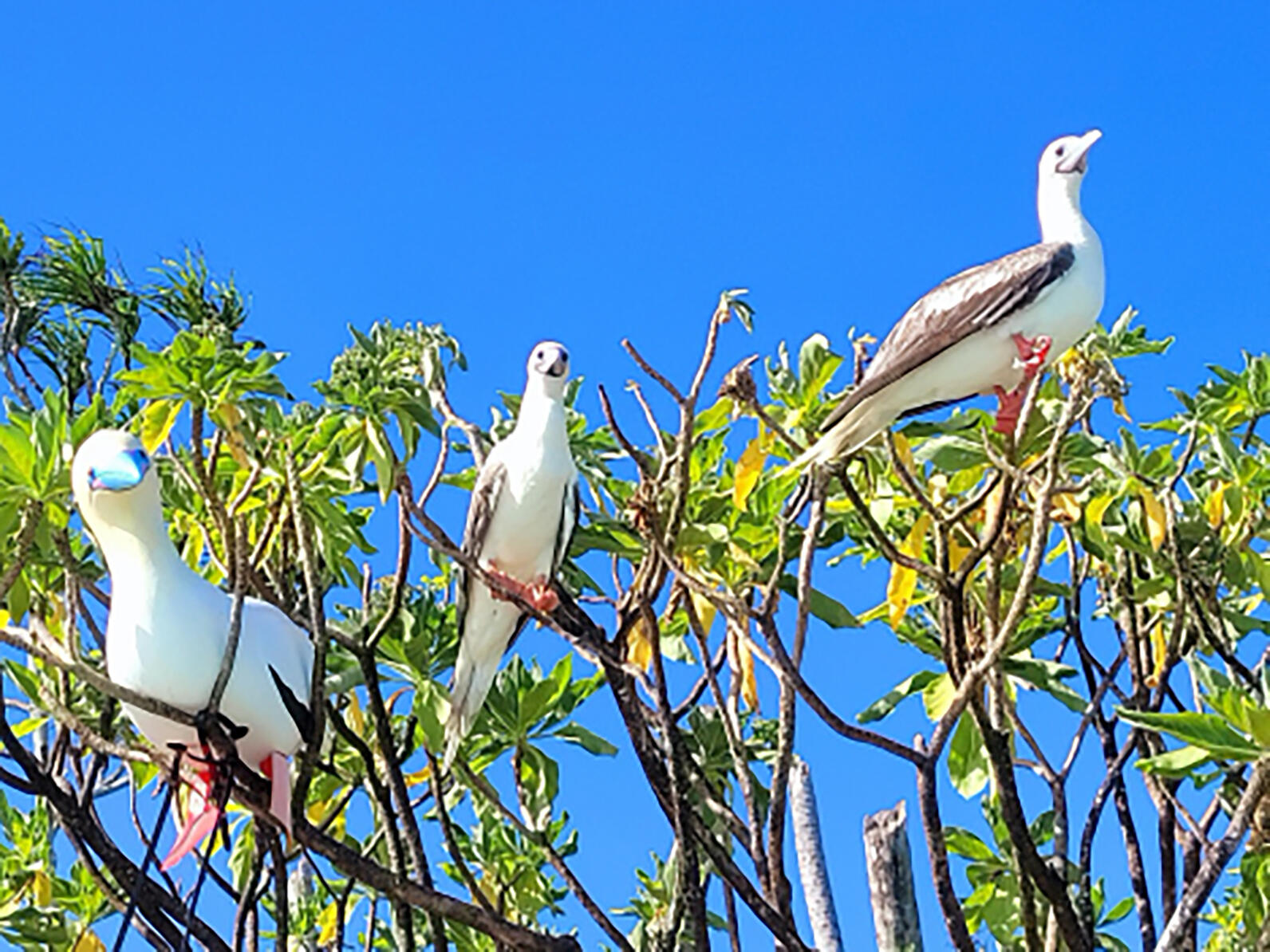
Social Attraction in Action
One of these things is not like the other, but it seems to be good at leading seabirds to safe habitat. Red-footed Booby decoys, produced by Mad River Decoy by Audubon over the winter, have been deployed on Palmyra Atoll with positive results. After intense habitat management and the removal of invasive rats, The Nature Conservancy is investigating a simple question: “Will decoys accelerate the rate at which red-footed boobies colonize newly available nesting habitat?” Stay tuned!
You can make a difference!
Our work protecting seabirds, inspiring the next generation of conservationists, and sharing a love of birds with thousands each year is only possible thanks to the generosity of people like you. Please consider making a gift or adopting a puffin to ensure this work continues for decades to come.











